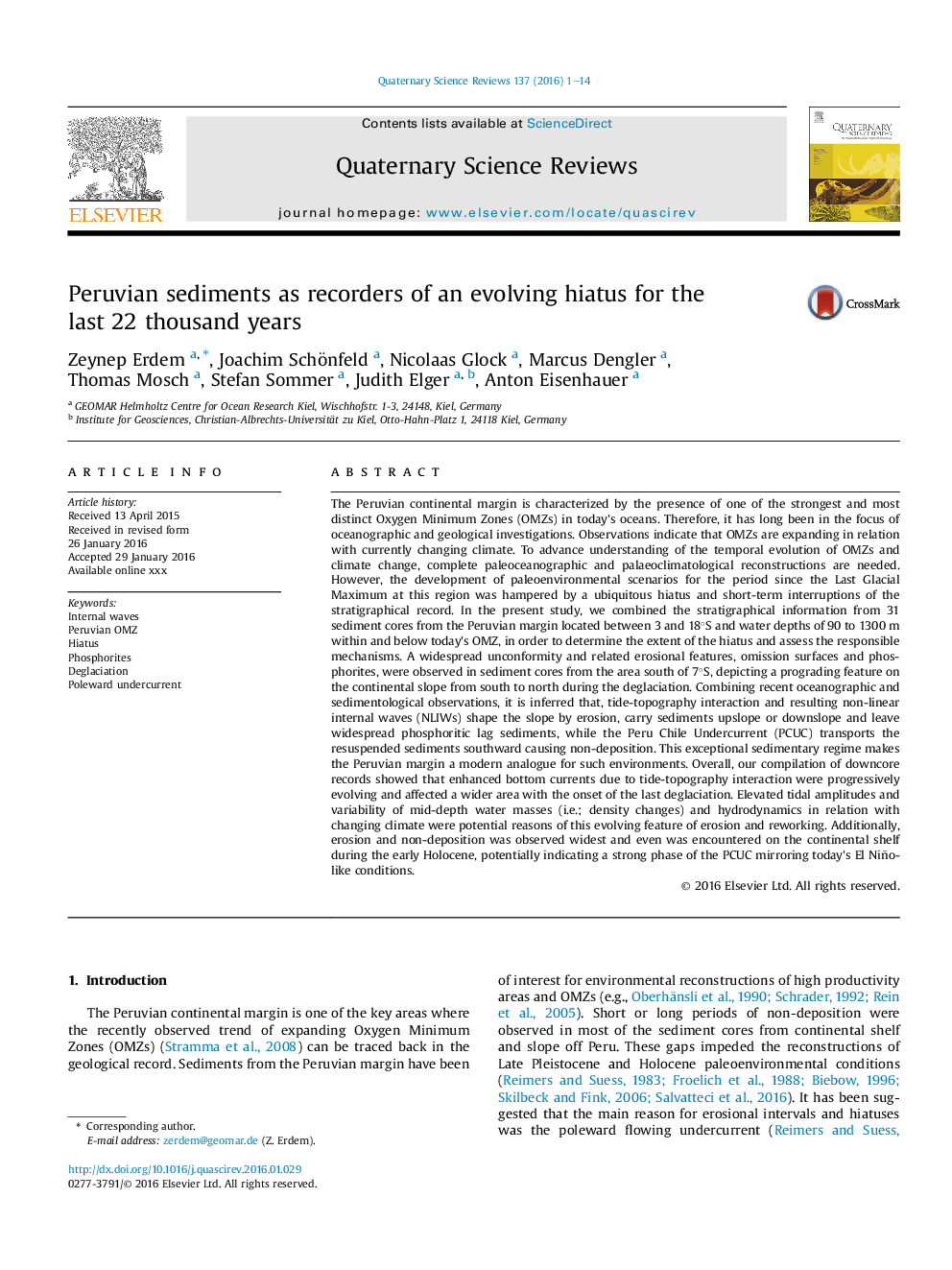| کد مقاله | کد نشریه | سال انتشار | مقاله انگلیسی | نسخه تمام متن |
|---|---|---|---|---|
| 6446502 | 1640798 | 2016 | 14 صفحه PDF | دانلود رایگان |
عنوان انگلیسی مقاله ISI
Peruvian sediments as recorders of an evolving hiatus for the last 22 thousand years
ترجمه فارسی عنوان
رسوبات پرو را به عنوان ضبط کننده های یک خیزش در حال رشد برای 22 هزار سال گذشته
دانلود مقاله + سفارش ترجمه
دانلود مقاله ISI انگلیسی
رایگان برای ایرانیان
کلمات کلیدی
موضوعات مرتبط
مهندسی و علوم پایه
علوم زمین و سیارات
زمین شناسی
چکیده انگلیسی
The Peruvian continental margin is characterized by the presence of one of the strongest and most distinct Oxygen Minimum Zones (OMZs) in today's oceans. Therefore, it has long been in the focus of oceanographic and geological investigations. Observations indicate that OMZs are expanding in relation with currently changing climate. To advance understanding of the temporal evolution of OMZs and climate change, complete paleoceanographic and palaeoclimatological reconstructions are needed. However, the development of paleoenvironmental scenarios for the period since the Last Glacial Maximum at this region was hampered by a ubiquitous hiatus and short-term interruptions of the stratigraphical record. In the present study, we combined the stratigraphical information from 31 sediment cores from the Peruvian margin located between 3 and 18°S and water depths of 90 to 1300 m within and below today's OMZ, in order to determine the extent of the hiatus and assess the responsible mechanisms. A widespread unconformity and related erosional features, omission surfaces and phosphorites, were observed in sediment cores from the area south of 7°S, depicting a prograding feature on the continental slope from south to north during the deglaciation. Combining recent oceanographic and sedimentological observations, it is inferred that, tide-topography interaction and resulting non-linear internal waves (NLIWs) shape the slope by erosion, carry sediments upslope or downslope and leave widespread phosphoritic lag sediments, while the Peru Chile Undercurrent (PCUC) transports the resuspended sediments southward causing non-deposition. This exceptional sedimentary regime makes the Peruvian margin a modern analogue for such environments. Overall, our compilation of downcore records showed that enhanced bottom currents due to tide-topography interaction were progressively evolving and affected a wider area with the onset of the last deglaciation. Elevated tidal amplitudes and variability of mid-depth water masses (i.e.; density changes) and hydrodynamics in relation with changing climate were potential reasons of this evolving feature of erosion and reworking. Additionally, erosion and non-deposition was observed widest and even was encountered on the continental shelf during the early Holocene, potentially indicating a strong phase of the PCUC mirroring today's El Niño-like conditions.
ناشر
Database: Elsevier - ScienceDirect (ساینس دایرکت)
Journal: Quaternary Science Reviews - Volume 137, 1 April 2016, Pages 1-14
Journal: Quaternary Science Reviews - Volume 137, 1 April 2016, Pages 1-14
نویسندگان
Zeynep Erdem, Joachim Schönfeld, Nicolaas Glock, Marcus Dengler, Thomas Mosch, Stefan Sommer, Judith Elger, Anton Eisenhauer,
